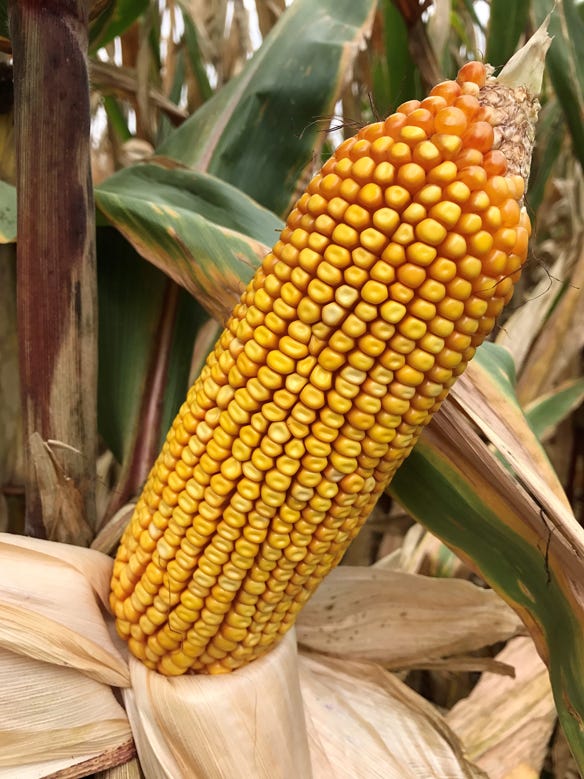October 31, 2017

I have recently read articles by Agricomseeds, a corn research company located in Sao Paolo, Brazil, and Santa Cruz, Bolivia. I have mentioned in earlier articles that the company is developing hybrids with high kernel row numbers. Ears have 28 to 32 kernels around — twice the number of rows typical of ears adapted to the temperate climate in the Corn Belt — and plants have tolerance to heat and drought. The ears are shorter, with bigger cobs and smaller kernels, as compared to hybrids here. Can we use this type of genetics to increase the row numbers in our hybrids and increase yield?
As I’ve noted before, adapting tropical genetics to our temperate environment has been tried in the past without much success. The process of borrowing genes for high kernel row numbers from the tropical corn adapted to Brazil may be a very difficult task.
Initial crosses between Brazilian tropical corn inbred lines and inbred lines adapted here may be made in greenhouses, but segregating populations from inbreeding of those crosses will have a tremendous amount of variability. It is difficult to track the many genes involved in the high row number “trait.”
Hopefully, new technologies of gene editing will be helpful. However, even if this is accomplished, genes don’t act alone. They must be in a certain “genetic environment” to give the right commands to produce the final product with high row numbers, kernel size and grain quality.
High yield history
We’ve been talking about how much corn we can produce per acre for more than 25 years. Back in 1993 when I was directing corn research at Stewart Seeds, Greensburg, Ind., I was prompted by Tom Bechman, Indiana Prairie Farmer, to make estimates of future corn yields. I estimated that someday we may be able to produce 400 to 500 bushels per acre.
I even drew a rough diagram of a corn plant and gave it to him. I don’t think he believed it, but he did publish the article. Since then, we’ve published several articles on this subject, and several growers have produced more than 500 bushels per acre, and are already challenging 600 bushels per acre under irrigation.

EAR OF FUTURE: Ears will likely have more girth in the future. Exactly how corn breeders accomplish this remains to be seen.

Yield keys
Achieving consistent high corn yields will require three components, not just girthy ears. I think we’ll need shorter plants with upright leaves and tolerance to heat and drought. They will need to tolerate populations of 70,000 to 80,000 plants per acre, and we’ll need equidistant spacing, preferably in a diamond-shaped pattern as suggested by North Dakota scientists last year.
Seed companies like Stine Seed are taking the lead in developing future hybrids that will be shorter with upright leaves suitable for high plant density. With the help of companies like John Deere, 12-inch-row and twin 20-inch-row planters have been developed.
Some private breeders are using the high row number trait in their corn breeding programs. These types of hybrids are already in test plots.
So what would these future corn plants and ears look like? I think plants will be shorter, with upright leaves and smaller tassels. These hybrids will have excellent root systems and drought tolerance, good disease and insect resistance, a longer grain-fill period and faster drydown. They will also have girthy ears with good grain quality. Future corn breeders will have plenty of opportunities to develop high-yielding hybrids.
Nanda is president of Agronomic Crops Consultants LLC. Email [email protected] or call 317-910-9876.
About the Author(s)
You May Also Like






